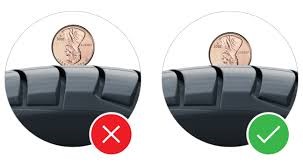Safe Driving Tips During Rainstorms
Each year in the US there are, on average, 5,891,000 motor vehicle crashes. Of these crashes, approximately 21% – nearly 1,235,000 – are weather related. On average, nearly 5,000 people are killed and over 418,000 people are injured in weather-related crashes each year. In fact, 78% of weather-related crashes and injuries are due to wet pavement. We must remember that spring in the Mountain State and beyond can bring heavy rains on our roads and make ordinary commutes suddenly treacherous.
Clearly, driving in the rain increases the risk of experiencing a motor vehicle accident. Please consider the following short list of tips for driving in a rainstorm to help reduce your risk of having an accident:
- Focus – While we may be unwilling to admit, we tend to lose complete focus on the road while driving due to a variety of distractions – drifting thoughts, conversation with a passenger, cell phone, etc. Every distraction is dangerous in perfect weather conditions, however, the risk of harm to yourself and others by distractions that cause you to lose focus is exponentially greater while driving on a wet roadway. While driving in a rainstorm it is critical that your attention stay focused on the roadway and the taillights of the vehicle ahead of you.
- Turn on your headlights – Most states have a law that requires motor vehicles to use their headlights when they are using their windshield wipers. Better yet, most motor vehicles have an automatic setting that will illuminate their headlights when the windshield wipers are in use. Please beware, however, that automobile mechanics routinely turn off the automatic setting on headlights to “off” while servicing to avoid shining bright lights on their coworkers in the mechanic bays. If you have your vehicle serviced, please remember to turn your headlights back to the “automatic” setting.

- Beware of hydroplaning – Hydroplaning is a well-known, technical term, used to describe what happens when your tire loses contact with the road surface. In essence, the tire begins to float across the roadway. Please remember that even minor rainfall can present hydroplaning conditions. Your vehicle can hydroplane in only one-twelfth of an inch of rain, which is less than the thickness of a 50-cent coin. If you hydroplane, hold the steering wheel straight and slowly let off the accelerator. If you begin to spin turn into the direction of the spin, however, do not jerk the wheel sharply as that may cause your vehicle to rollover.
-
Check your tire tread. The risk of hydroplaning increases significantly if your tire tread is worn and needs replaced. Please remember to check you tire tread at the beginning of the spring and winter driving seasons. We recommend having your tire tread checked at least once annually by a tire professional, however, if one is unavailable you can check the tread yourself by utilizing the penny test.

- Turn off cruise control. Please refrain from using cruise control while driving in heavy rain or when water has accumulated on the roadway. Cruise control can compromise your ability to quickly let off the accelerator in the event you hydroplane or encounter cars that suddenly reduce speed ahead of you.
- Slow down. Perhaps nothing is more important when driving in heavy rain or on wet roadways than reducing your speed. Please remember that a wet roadway will impact the traction of your tires, reduce your reaction time due to reduced visibility, and increase your stopping distance. For those reasons it is important that you reduce your speed when driving in heavy rain or on wet roadways as well as allow more space between you and the vehicle ahead of you.
- Caution when merging. Please remember to use more caution while merging between lanes during periods of heavy rain or when roadways are wet. Water will commonly collect and pool in the space between lanes that can increase the risk. Also, your visibility will be impaired by heavy rain and water splashed by traffic. Drivers must exercise more caution while changing lanes on a wet roadway due to the decreased visibility. To complete the penny test, hold Lincoln’s body between your thumb and forefinger and insert into the tire where the tread appears the lowest. Place Lincoln’s head into one of the grooves and if any part of his head is covered by the tread you are driving with a safe amount of tread.
Driving in heavy rain or on a wet roadway is dangerous and requires everyone to use more caution. Please remember to focus on the roadway, use your headlights, take appropriate steps to prevent hydroplaning, turn off cruise control, and slow down. Taking these steps will increase your odds of arriving at your destination safely, rain or shine.